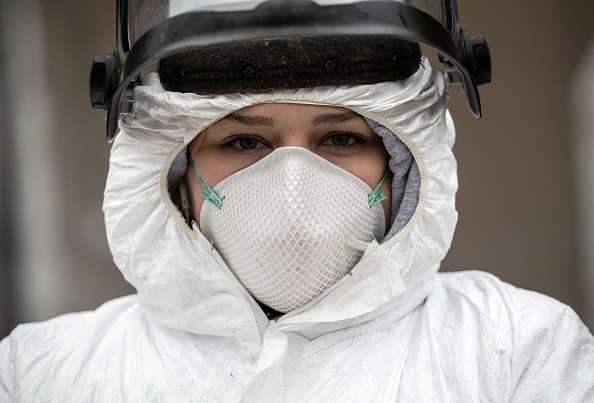Described by Sequoia Capital as the black swan event of 2020, the long-term economic fallout of the COVID-19 pandemic on startups is still to be seen. However, one effect which is sure to disrupt the MO of many early-stage startups is the cancellation of events and conferences.
According to Forbes, more than 35.3 million people who were planning to attend an event have been forced to change their plans in recent months. And while some might lament being forced to leave their Metallica T-shirts and 2020 Summer Olympics flags in the cupboard, many startup founders are biting their nails at the prospect of lost leads and connections from events and conferences.
The silver lining: Forcing founders to wean themselves off conferences and events as a “go-to” business development tactic might not be a bad thing in the long run.
Based on my experience, many early-stage startups waste lots of time and resources doing the rounds at events without clear aims, using up lots of the founder’s time, without driving much business value. At an early stage in a startup’s journey, every tactic used needs to drive real ROI and ultimately be driving new business opportunities.
So let’s look at why missing out on events might not be the end of the world, and how startups can focus their time, energy and resources on more scalable and consistent lead-gen activities.
What’s my beef with startup events and conferences?
It is worth clarifying early on that conferences and events can provide valuable ROI in terms of lead generation and business development to startups that approach them in the right way.
The silver lining: Forcing founders to wean themselves off conferences and events as a “go-to” business development tactic might not be a bad thing in the long run.
Getting involved in events as speakers, taking part in panels or showcasing projects via pitch competitions offers the “Golden Ticket” that grants access to the speaker’s lounge, side events and dinners. This facilitates conversations with the most important investors, journalists and potential partners and clients in attendance on a level setting, rather than having to bustle for attention with the rest of the masses on the conference floor.
Aside from increasing the probability of real business development opportunities, taking part in a conference normally includes a free ticket, if not accommodation and travel costs being covered too.
On the flip side, in my experience, going to startup events and conferences as a lowly attendee offers very little tangible ROI, and can accumulate into a considerable expense too. However, as Forbes contributor Sophia Matveeva puts it, even a $10 event is expensive if it doesn’t offer ROI, “because the opportunity cost of events is not just money, it is also time.”
The value of attending events has to be assessed in relation to the time commitment required. If a meetup lasts three hours and includes an hour’s travel, and a large conference is a full-day commitment or even two days in a different location, the opportunity cost of the conference should be carefully weighed against time that could be invested in other lead-generation activities.
Can we approach events/conferences in a data-driven manner?
Unless founders track and assess the ROI from events in the same way as they would any other lead-generation tactic, the chances are that a pocketful of useless business cards and some branded swag (and possibly a hangover) will be the only returns from the time and resources invested.
Unless founders track and assess the ROI from events in the same way as they would any other lead-generation tactic, the chances are that a pocketful of useless business cards and some branded swag (and possibly a hangover) will be the only returns from the time and resources invested.
So how can we assess the value of events in the same way as we would, for example, paid ads? First, founders should be placing metrics on each individual event, such as:
1) Source of lead: Was this via speed-networking, or by reaching out via an event app?
2) Customer acquisition cost (CAC): What were the total costs of this event? Yes, beers count.
3) The number of leads: Only count warm leads. Business-card confetti at speed-networking doesn’t count.
3) The number of those leads closed: How many paying customers did this event lead to?
4) Lifetime value (LTV): How big were these tickets?
5) Sales cycle: How long did the lead take to close?
Assessing the value of particular events via metrics is possible, but it would take a long time. Founders would need to record data over the course of a year, allowing them to highlight which events on the calendar offer the highest chances of returns for the next year. However, the reality is that this requires time and resources, which many early-stage companies simply don’t have. Testing the effectiveness of events also requires trying different tactics, including:
- Paying for a booth
- Becoming a sponsor
- Increasing the number of representatives in attendance
- Paying for a ticket with increased access to side events, etc.
Testing these tactics makes sense for larger-ticket businesses that can expect $50,000+ returns from successful events. But for startups, the chances are that after blasting through lots of time and resources, they will most likely only highlight one of the 10 conferences they attended that offered real ROI. For any other lead-generation activity, this would be considered a massive failure.
Why aren’t events scalable lead-gen activities?
Making lead generation scalable requires monitoring the success rate of different tactics, doubling down (scaling) the activities that are working and putting fewer resources behind those that are not.
This requires founders to be in control of the levers in the sense that they have the ability to add more, reduce or adjust the scale at which different activities are utilized.
This is not really the case for events, for a number of reasons:
- Conference organizers control the content tracks/side-events/activities that take place during the events themselves. Unless they are organizers/sponsors, founders have few ways to exert influence at the events they attend.
- Even if a founder does highlight a certain event that brings in lots of leads, there are still a limited number of events that offer access to the right target audiences and cover themes related to particular verticals/niches within their geographic region.
Focus on more scalable lead-gen activities
In my opinion, it makes more sense to focus on lead-generation activities that offer startups more control. There are many different ways for startups to experiment with different tactics within more established inbound and outbound techniques:
Inbound lead generation:
- Content marketing: Monitoring traction of webinar versus e-book, long-form versus short-form
- Blogging: Trying different content formats, keywords and themes
- SEO: Changing keywords, titles, themes and user intent
- Paid ads: Testing different platforms, target users, content styles and themes
Outbound lead generation:
- Direct emails: Sending emails at different times, including different content formats
- Targeted social media messaging: Targeting different positions in a company, on different platforms
- Cold calling: Using different amounts of representatives, targeting different target users
With the aforementioned techniques, there are fewer limits on how many different variations of these techniques startups can experiment with. They are also a lot more flexible in terms of scalability, meaning startups can invest as much or as little in each technique as they please. You can spend $10 on paid ads, or $1,000. You can have two sales representatives, or 200.
When deciding how to best spend lead-generation budgets, founders should ask themselves:
- Can I control the levers? i.e. the tactics I am using within these tactics.
- Can I scale to the capacity I need to; is there room for exponential growth?
- Can I control the rate of scale over time?
The final point is arguably the most important, but often overlooked. Startups need to be able to control the pace at which they scale, meaning they can increase activity when things are going well, but also reduce activity if things aren’t working out, or — in the case of COVID-19 — if the company needs to tighten its belt due to unforeseen, or uncontrollable circumstances.
The best way to drive sustainable growth is by establishing sustainable internal systems and processes. If you think of a business as an engine, we don’t know what the machine can handle until we test its capabilities. We have to be able to scale processes, as this is where we will find the weaknesses in the system. However, we also need to be able to back off when we do find the weaknesses without causing further damage.
Startups need to “stress-test” lead-generation techniques gradually. If a startup is investing $100 in paid media and achieving five sales-qualified leads (SQLs) per month. The next step is not to go “hey, it’s working,” and chuck $1,000 at it. The sensible next step would be to scale up the tactic by investing $200 and aiming for 10 SQLs per month.
Summing up
So, with events and conferences canceled for the foreseeable future, and a high probability that many event organizers will not be able to recover from their losses this year, startups should use this forced pause to re-assess their processes and strategies.
As they say, slow but steady wins the race. The end goal should always be to achieve consistency in processes that are scalable. When startups approach processes in a data-driven, consistent manner, it offers the chance to scale exponentially over time.










